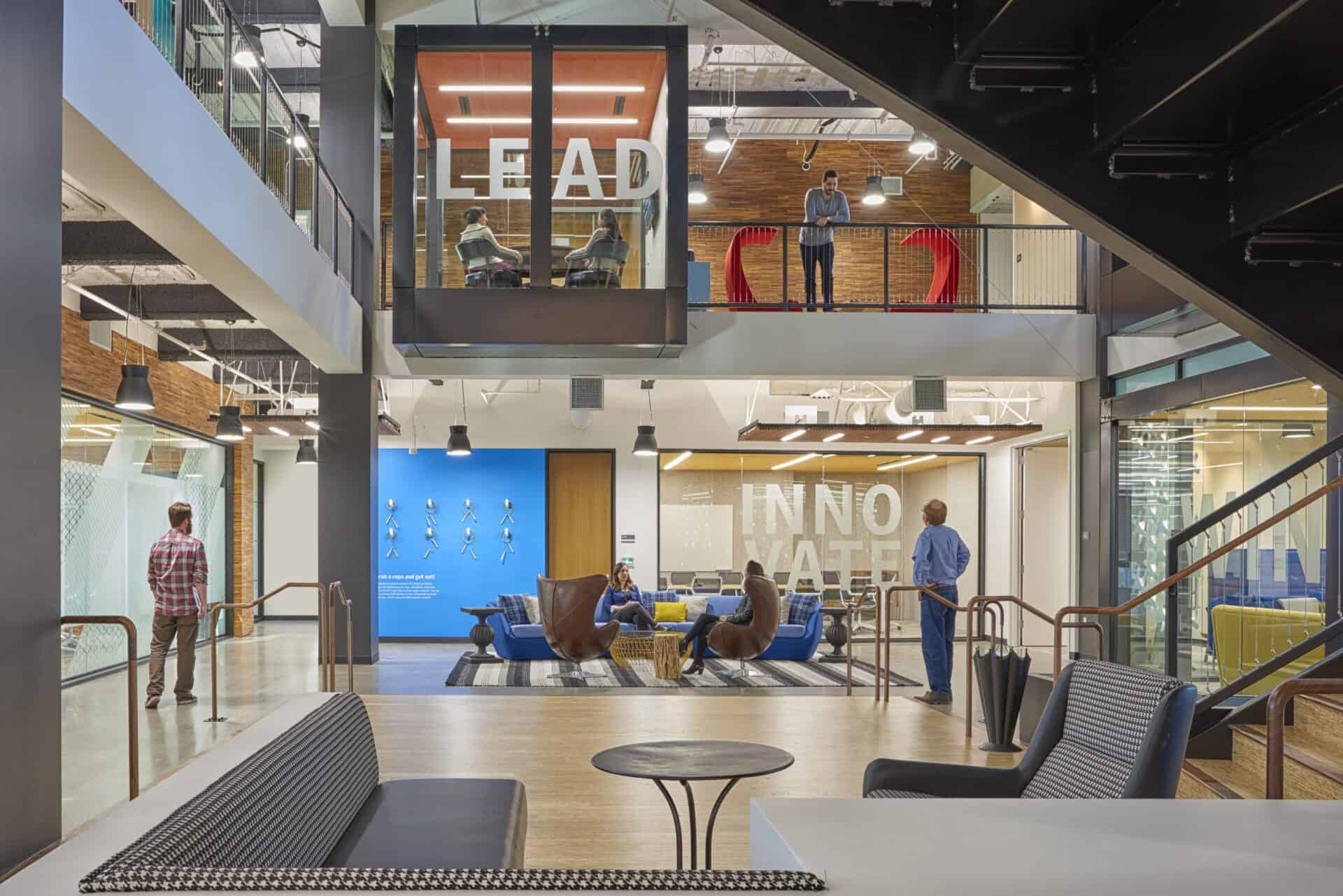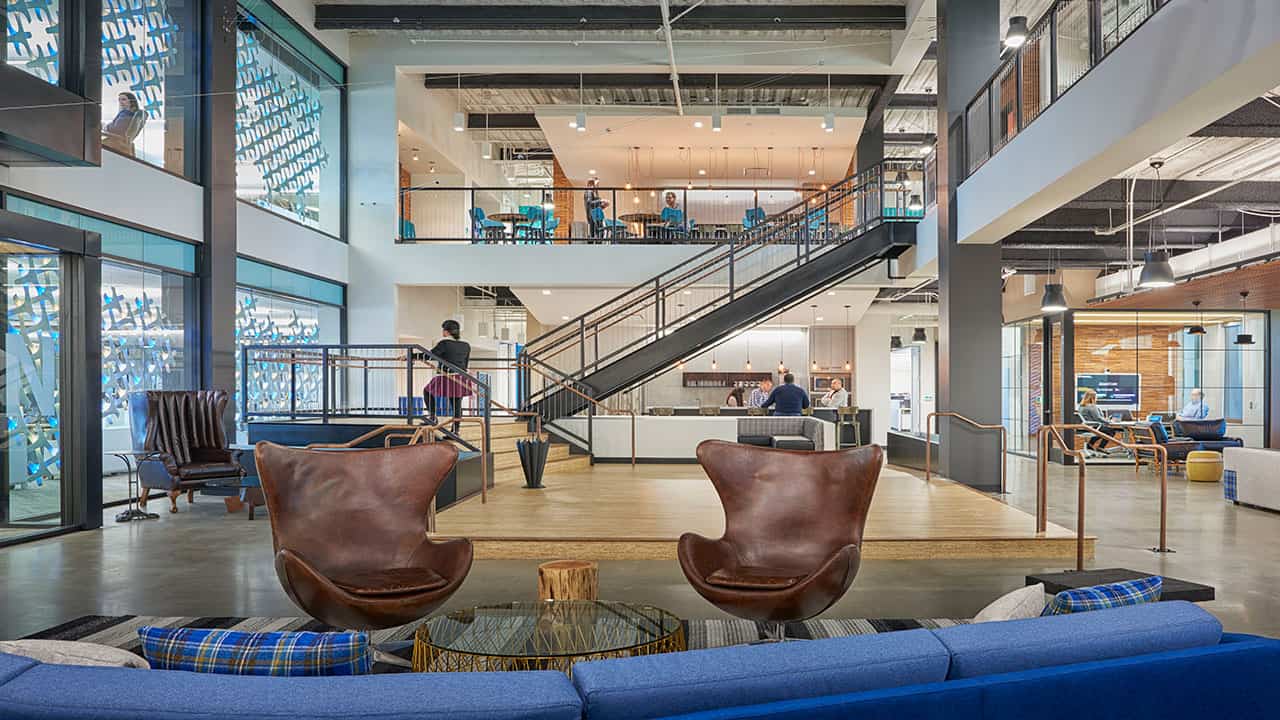It’s always extra gratifying when a project you’re working on embodies a personal passion, but when it involves two?!? That’s an architect’s dream. For me, this happened not too long ago when working on a headquarters renovation for tech giant, Symantec.
Located in the heart of Silicon Valley and competing for some of the best and brightest minds in the technology industry, Symantec understood from the very beginning that they would need to find ways to differentiate their workspace from the competition. Not an easy feat when you’re surrounded by the Googles and Apples of the world. Yet, Symantec realized the power of good design and that they had an opportunity to create an environment that would make a tangible and measurable difference in the lives of their employees. For us, and our partner firm AP+I, this was music to our ears.
But their goals didn’t end with creating a beautiful workspace that would make communication, innovation and knowledge sharing easier. Symantec was interested in having their workplace designed to be a healthier, more productive environment, and the first WELL-certified building in Silicon Valley (and only one of 200 in the world). This is where I knew that we could make a difference. My passion about neuroscience and design led me to a deep interest in WELL buildings several years ago and I’ve been hooked on sharing how design can have a healthy impact on our brain and our bodies ever since. Additionally, Vickie Breemes here at Little took a headfirst dive into administering the WELL program for the building – so well in fact that the WELL Building Commissioner only had one small issue for us to address, which was close to miraculous!

We worked with Symantec to aggressively create an environment to put employees first: their long-term health habits at home and in the office, their happiness and their impact on the organization. Taking it further, we designed a place that would be restorative, accommodate many different work styles and eliminate the more sedentary lifestyle commonly associate with office and tech work.
The employee feedback has been incredible and validates the success of infusing a more active culture of wellness throughout the headquarters. Employees are moving more, sitting less and taking advantages of company activity incentives, such as subsidies for gym memberships, active internal events and more. Overall, employees report being more engaged and more productive, and it’s had a pervasive health effect on the entire corporation. They are rolling out health standards for each of their offices based on this project.

